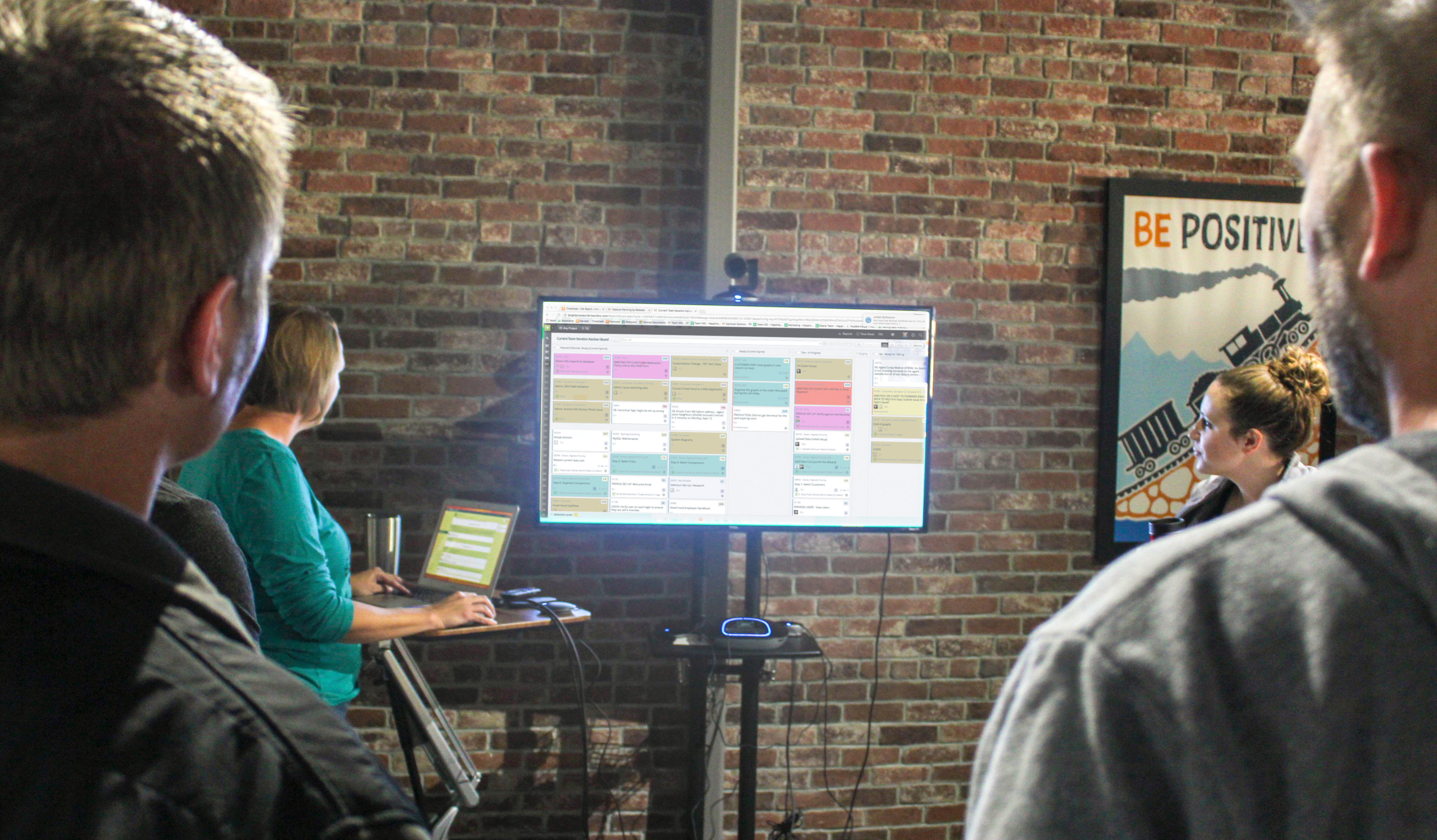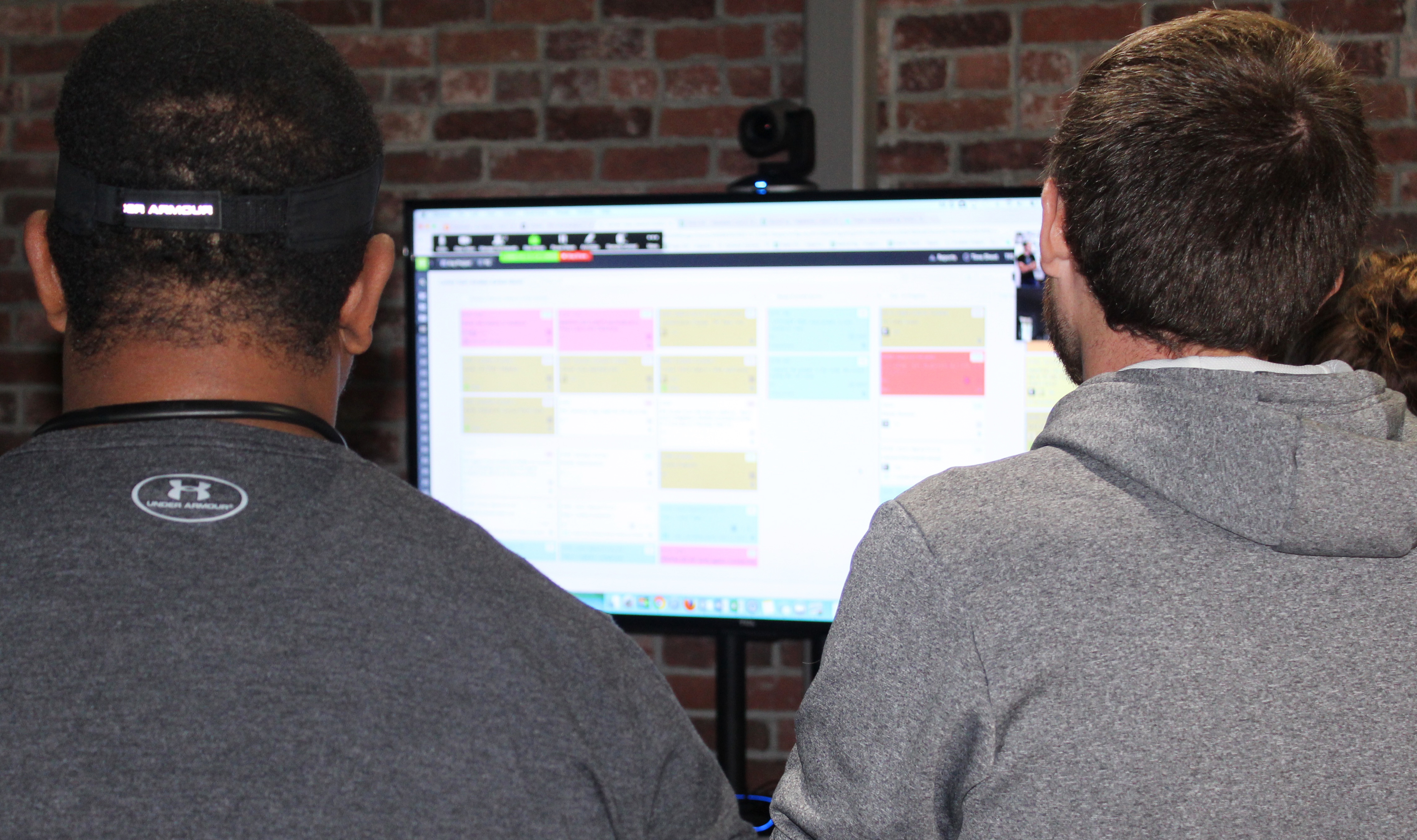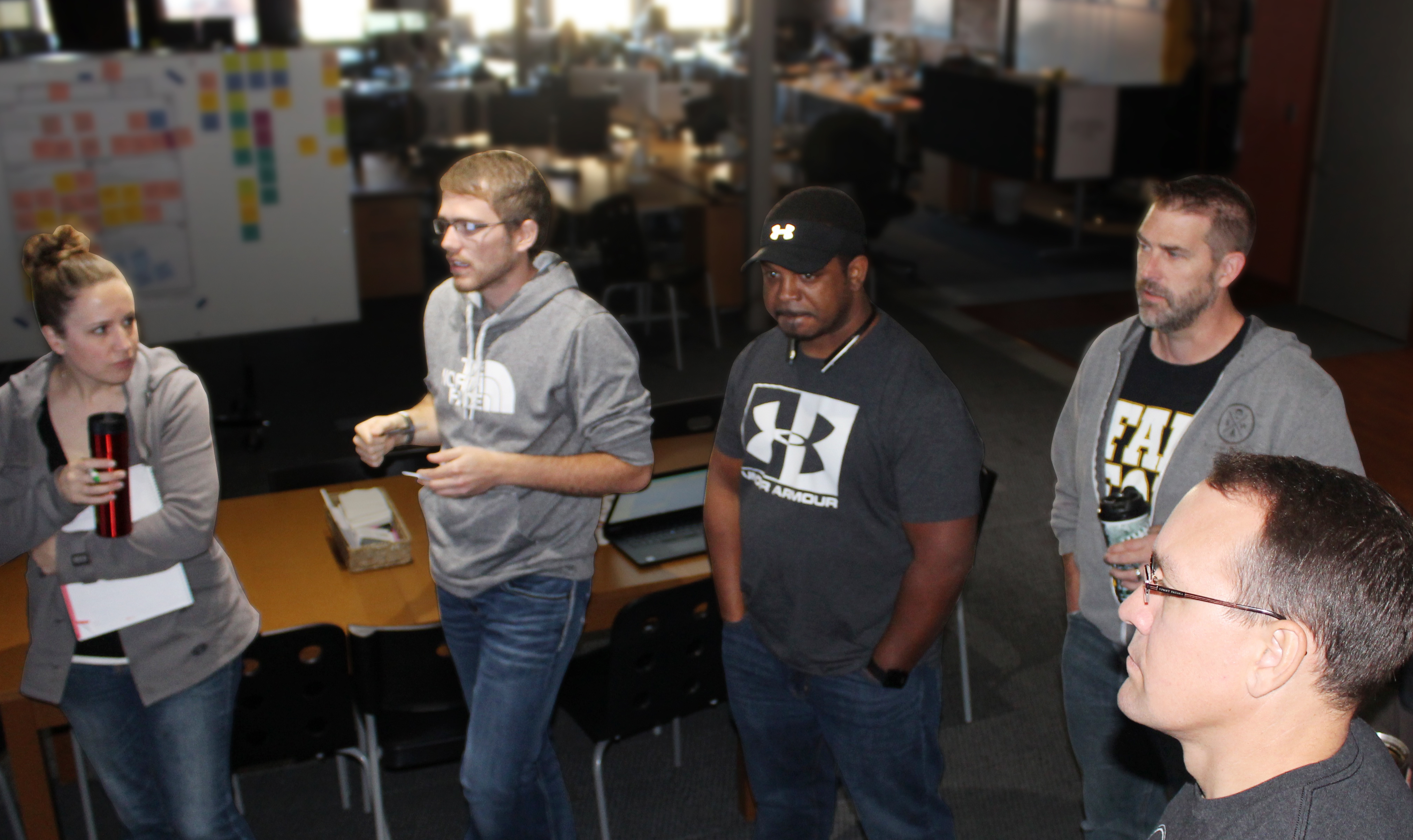
The Far Reach team spent over a year and a half becoming a scrummy organization, and we’ve learned a few lessons along the way. In this series, we’ll share what we’ve learned and give you a sneak-peek into a typical day at Far Reach.
The daily stand-up is a 15-minute gathering where each team member discusses what they did yesterday, what they’re going to do today, and if there’s anything in their way. But it’s important to note, it’s not a status report. It’s a time for the team to plan their day together.
Read the bold part again. Once teams come together and get over that first hurdle, they will be more efficient, effective, and ready to adapt to the ever-changing custom software and marketing environments. But, as with all things scrum, the team will
continually look to make improvements.
Here are a few things the Far Reach teams have learned:

1. Invest in technology that works for remote team members. The built-in laptop cameras and speakers worked as an initial test, but once it became clear that some team workers would be remote, it was time to invest in a good microphone/speaker/camera set. With this evolution, team members in the office no longer need to yell if they are far away from the main microphone, and remote team members can spend their energy on actually understanding what the speaker is saying instead of just trying to hear the words. In addition, the team in the office uses a TV and cart to ensure everyone can see while maintaining some respect for personal space. The TV/cart combo ensures portable privacy in meeting rooms or wide-open viewing during whole-team huddles. For video conferencing, the team progressed from using Google Hangouts to GoToMeeting to finally settling on Zoom, which is easier to use and provides the best audio/video quality.

2. Continue to improve the team’s scrum board. Initially, team members stood around physical scrum boards, and the accounting department discovered a need to budget more for Post-it Notes. But, since then, the development teams have settled on using digital boards since each team has at least one remote team member. A portable TV allows the team to interact with the boards as if they were physical walls. A projector didn’t allow this because of its light and the shadow it casts. The teams share a single screen so everyone—whether remote or in the office—is looking at the same thing during stand-ups.

3. Do stand-ups in the morning, and be prepared before the start time. To the teams, this seems almost obvious now, but it took a few tries to get here. They’ve found that stand-ups should start no later than 9:30
a.m. Right now, one team meets at 8:30 a.m. and the other meets at 9:00 a.m. To ensure the time spent is efficient, Scrum Master Angie Steffen makes sure everything is set up and ready to go in advance. After all, getting the technology set up, connected,
and ready to go takes a few minutes. And, a few minutes spread among many people adds up quickly.
Following stand-up each day, the team members disperse and begin building high-quality software and marketing campaigns for awesome clients. Stay tuned—in future posts we’ll share favorite retro agendas and tips for sprint planning.